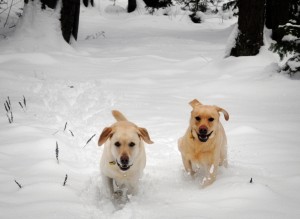It’s a life saving behavior and one that needs to be taught like any other behavior. It is one of the most difficult behaviors to get reliably but it shouldn’t have to be. With practice, patience, and consistency anyone can achieve a reliable recall. There are many different ways to teach “Come” and below we’ll examine 5 of them.
“How to Train a Whistle Recall” by Pamela Dennison
Pamela starts with the first steps of teaching the whistle recall. It begins with charging the whistle. With every blow of the whistle she delivers high value treats. She puts a lot of emphasis on the use of the high value treat versus commercial treats. She gives a timeline of how long your should work on charging the whistle and the importance of not rushing the first steps of any recall. This video does not cover it but with the following videos you will see how to gradually add distraction to begin proofing the recall.
“How to train “Come!”” by Emily Larlham – Kikopup
Emily teaches the first steps of “Come” with the dog on leash. She begins by just simply backing up, clicking & treating when the dog moves with her. Once this becomes reliable she adds the recall cue. Once the dog is reliably coming, Emily then works on adding distractions while the dog is on leash. The art of teaching come on leash first is to set the dog up for success so that it never learns that not responding to the cue has any value.
http://www.youtube.com/watch?v=PL9Rk-8KF9I?rel=0&w=560&h=315
“How To Train Your Dog to Come” by Training Positive
In this video, the fundamentals are brought into training the recall. The focus is on rewarding your dog for checking in while in a distracting environment and utilizing a “watch me” cue. These behaviors are a precursor to letting your dog off leash so that your dog remembers that you exist while in a stimulating situation and increases the likelihood that they will continue to check in with you. The other aspect of teaching come that Training Positive uses is once you have your dog come to you engaging them with other behaviors or tricks.
http://www.youtube.com/watch?v=nLo8YP4-D8Y?rel=0&w=560&h=315
“Come When Called” by Zak George
Zak George begins teaching the recall by making it a fun game for you and the dog. Making it fun will get a faster recall. In his video, Zak uses a footage from training a puppy recall for the first time which is useful because you are able to see when real life issues arise and how to troubleshoot them when they happen.
http://www.youtube.com/watch?v=rwldfBjFsdE?rel=0&w=560&h=315
“Come Here and Sit” by Ian Dunbar
In Ian’s short video, he starts with luring the dog backwards to follow him, then into a sit and as he delivers the treat he is touching the dog’s collar. Ian explains the importance of touching the collar as part of the recall because if you need your dog to come to you it will do you no good if you can’t actually catch your dog. As in other videos he keeps the distance short and the distraction low while practicing the sequence of events.
While all these videos are similar, they offer different perspectives on teaching the recall. The one thing that is consistent within these videos is that you can’t rush this behavior. If you want to get a reliable recall you have to practice and build the behavior by starting with low distractions and always proofing.
What ways have you found most effective to teach a dog to come?
Get Dog Training Business Tips!
Receive valuable dog training business tips and resources every week! Subscribe to The Modern Dog Trainer now by submitting your name and email below.
[mc4wp_form]




